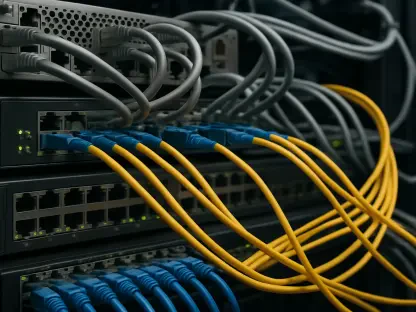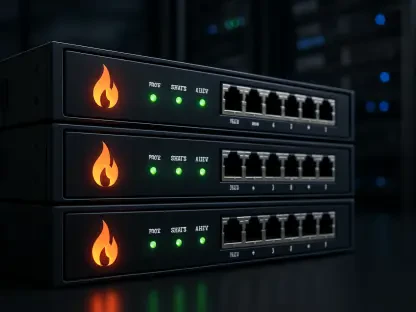In the fast-evolving realm of artificial intelligence, the staggering costs of cloud GPU computing often stand as a barrier for businesses aiming to harness AI’s potential, and it’s a challenge that many face daily. Picture a startup with a groundbreaking AI model, ready to transform an industry, yet held back by the daunting price tag of GPU resources—sometimes running into hundreds of dollars per hour on platforms like AWS. This scenario is all too common, but a seismic shift in the market is changing the game. Dramatic price drops, with savings of up to 80%, are now within reach for those who can adapt quickly. This article delves into how agility is becoming the linchpin for slashing costs in cloud GPU computing, offering a lifeline to enterprises of all sizes.
The significance of this trend cannot be overstated. As AI moves from experimental phases to core business operations, managing expenses on cloud infrastructure is critical for staying competitive. With prices for high-demand GPU instances plummeting—some by as much as 88% in specific regions—businesses have a rare opportunity to optimize budgets without sacrificing performance. The key lies in understanding market dynamics and leveraging operational flexibility. What follows is an exploration of why these costs are dropping, who stands to gain, and how strategic agility can turn fleeting discounts into sustainable savings.
Why Are Cloud GPU Costs Plummeting, and Who Stands to Gain?
Cloud GPU computing, once a prohibitively expensive resource, is witnessing an unprecedented decline in pricing. High-demand instances like AWS’s #00 Spot Instance have seen reductions as steep as 88% in certain regions, with costs dropping from $105.20 per hour to just $12.16 in a matter of months. This isn’t a temporary glitch but a reflection of deeper market shifts, driven by oversupply and changing demand patterns among major providers like AWS, Microsoft Azure, and Google Cloud Platform.
These price drops signal a golden opportunity for a wide range of players. Startups scaling AI inference workloads can now access powerful computing resources at a fraction of the cost, enabling faster innovation. Meanwhile, large enterprises managing vast data pipelines stand to save millions annually by capitalizing on these trends. The beneficiaries are not limited to tech giants; even mid-sized firms with AI ambitions can redefine their financial outlook by tapping into this evolving landscape.
Understanding and acting on these reductions is crucial. The savings are not automatic—they require insight into market conditions and a readiness to adapt. Businesses that monitor pricing trends and adjust their strategies accordingly will emerge as leaders in cost efficiency, turning what was once a financial burden into a competitive edge in the AI-driven economy.
The GPU Landscape: Oversupply, Inference, and the Race for Efficiency
A profound transformation is underway in the cloud GPU market, reshaping how resources are priced and utilized. Major cloud providers are dealing with an oversupply of older GPU models like Nvidia’s A100 and #00, leading to price cuts of nearly 50% in regions such as Europe. This surplus stems from rapid advancements in hardware, leaving providers with excess capacity as newer models like the GB200 Blackwell remain scarce and in high demand.
At the same time, the AI industry is shifting its focus from resource-intensive model training to inference workloads, where immediate business value is paramount. Inference, unlike training, prioritizes real-time application over long-term development, making it a priority for smaller companies seeking quick returns. This pivot is altering infrastructure needs, with many firms finding that older GPUs still deliver robust performance for practical applications, further driving down costs for those willing to forgo the latest tech.
The implications of these trends are far-reaching. Smaller players, often constrained by budget, are uniquely positioned to benefit from cheaper, older models that still meet their needs. Efficiency is now the name of the game, and as providers adjust to balanced supply-demand dynamics for legacy hardware, the market is becoming more accessible. This democratization of AI computing power is leveling the playing field, allowing innovation to flourish across diverse sectors.
Unpacking the Savings: How Agility Drives Down Costs Across Regions
Achieving savings of up to 80% on cloud GPU costs hinges on strategic adaptability rather than mere chance. Spot instance pricing, which can fluctuate by the minute, varies significantly across data center regions, creating windows of opportunity for cost-conscious businesses. For instance, the AWS #00 Spot Instance price drop from $105.20 to $12.16 highlights how dramatic these savings can be, while Europe has seen efficiency gains of nearly double during peak usage periods.
The mechanics of cost reduction lie in dynamically reallocating workloads to underutilized regions with lower prices. By monitoring capacity and pricing in real time, companies can shift operations to data centers where resources are abundant and cheap. This approach requires a departure from static infrastructure models, embracing instead a fluid system that responds to market conditions with precision and speed.
Real-world data underscores the impact of such strategies. Businesses that have adopted regional flexibility report substantial reductions in operational expenses, often without compromising on performance. The volatile nature of cloud pricing demands a proactive stance—those who remain rigid in their resource allocation risk missing out on savings that could redefine their financial planning in the AI space.
Voices from the Field: Why Flexibility Is Non-Negotiable
Industry leaders are sounding the alarm on the importance of adaptability in cloud GPU management. Laurent Gil, CEO of a prominent AI performance platform, emphasizes, “Inference is where AI delivers real business impact, and agility is the only way to keep costs in check.” His perspective sheds light on a common misstep—many companies chase cutting-edge GPUs out of fear of falling behind, even when older models, like those powering major AI tools, offer ample capability.
Data backs up this call for flexibility. Rapid pricing shifts and stark regional disparities reveal that sticking to fixed providers or locations can inflate costs unnecessarily. For example, while some regions struggle with capacity shortages, others sit on untapped resources at a fraction of the price. This mismatch creates a clear incentive for businesses to adopt a more dynamic approach, ensuring they aren’t overpaying for computing power.
The consensus among experts is unmistakable: without the ability to pivot quickly, significant savings slip through the cracks. Companies tethered to outdated procurement habits are at a disadvantage, unable to respond to the fast-paced changes in cloud economics. Embracing flexibility isn’t just a cost-saving measure—it’s a fundamental shift toward sustainable AI operations in a competitive landscape.
Practical Steps to Slash Costs with Agile GPU Management
Navigating the complexities of cloud GPU costs requires a clear, actionable plan rooted in agility. The first step is to leverage spot instances by closely tracking pricing fluctuations. These short-term, discounted resources can drastically cut expenses when used strategically, especially during off-peak hours or in less saturated regions. Tools that provide real-time alerts on price drops are invaluable for staying ahead of the curve.
Another critical tactic is adopting geographic flexibility. By allowing workloads to migrate to data centers with surplus capacity, businesses can tap into lower rates without sacrificing reliability. This approach demands a mindset shift—moving away from fixed infrastructure to a model where location is dictated by cost and availability. Such adaptability ensures resources are always aligned with the most economical options.
Finally, integrating AI-driven automation tools is essential for maintaining efficiency at scale. Human operators cannot match the speed of market changes, but automated systems can optimize resource allocation in real time, minimizing waste. By implementing these steps—spot instance utilization, regional mobility, and automation—organizations can achieve significant cost reductions while sustaining high performance in their AI initiatives.
Looking back, the journey through the shifting landscape of cloud GPU computing revealed a market ripe with opportunity for those who adapted swiftly. The dramatic price drops and the pivot toward inference workloads underscored a pivotal moment in AI infrastructure. Reflecting on the insights shared, it became evident that agility was not merely an option but a necessity for cost efficiency. Moving forward, businesses must prioritize dynamic strategies, investing in automation and flexible systems to stay competitive. The future of AI computing hinges on the ability to evolve with the market—those who embrace adaptability today will lead tomorrow’s innovations.









